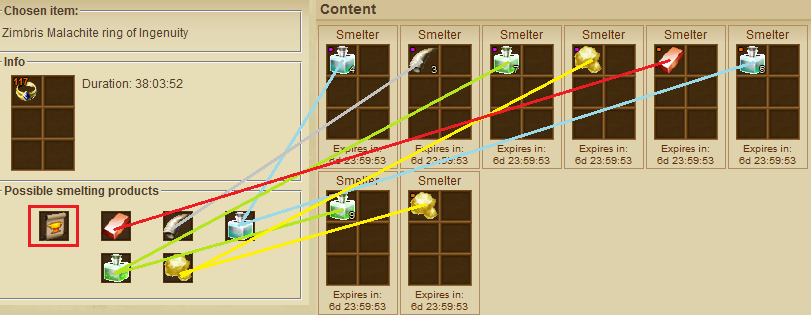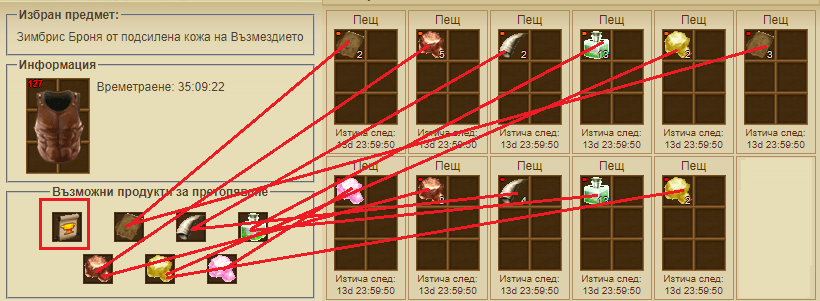Forging
- Details
- Created: Friday, 23 February 2018 22:03
- Written by Skarsburning
- Hits: 18001
Forging
Table of Contents
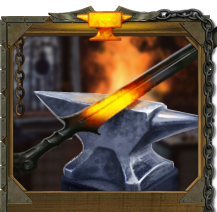
In the Forge you can create your own equipment. You can forge all of the equipment items to be found in the game with the scrolls you find on your adventures. Simply collect the necessary resources, add optional tools to make the forging easier, and away you go!
Forging Interface
The first time you enter the forge you will be greeted by the following message:
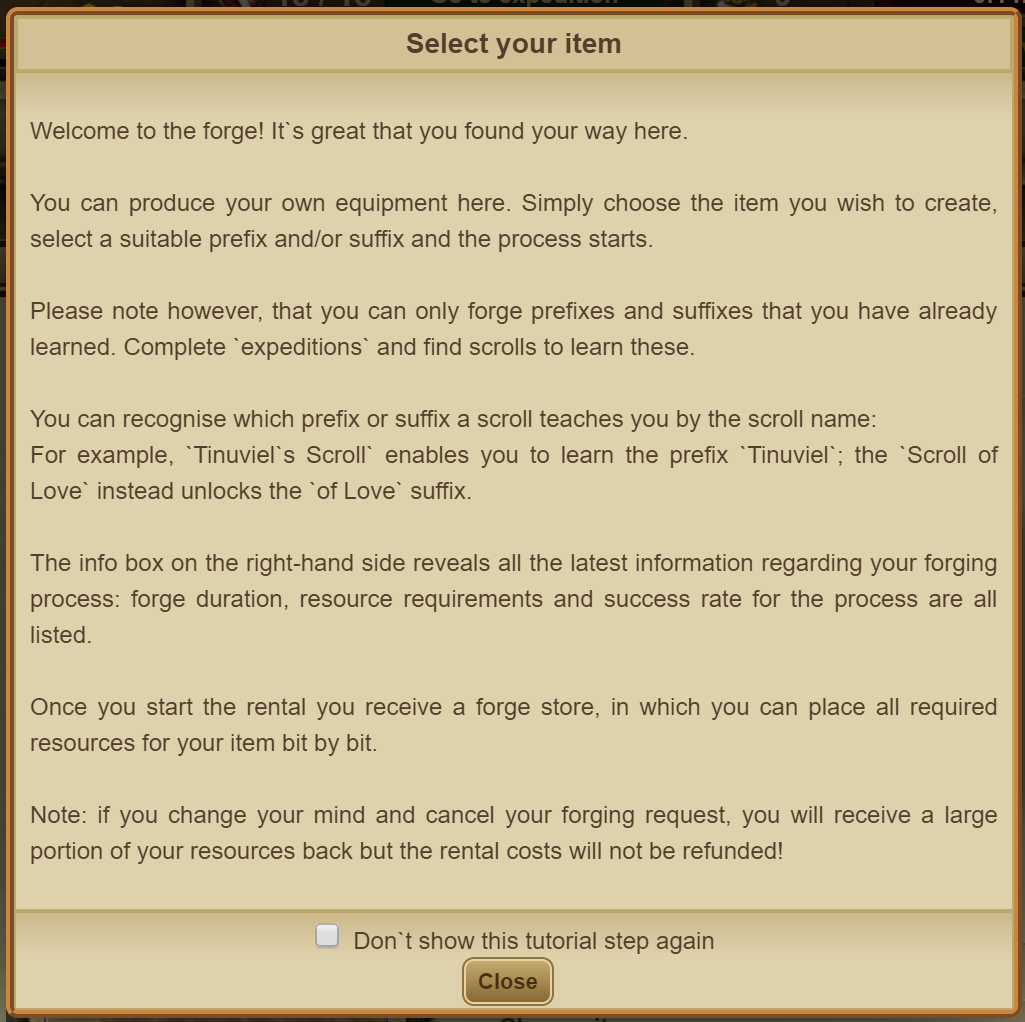
So this is the Forging interface explained:
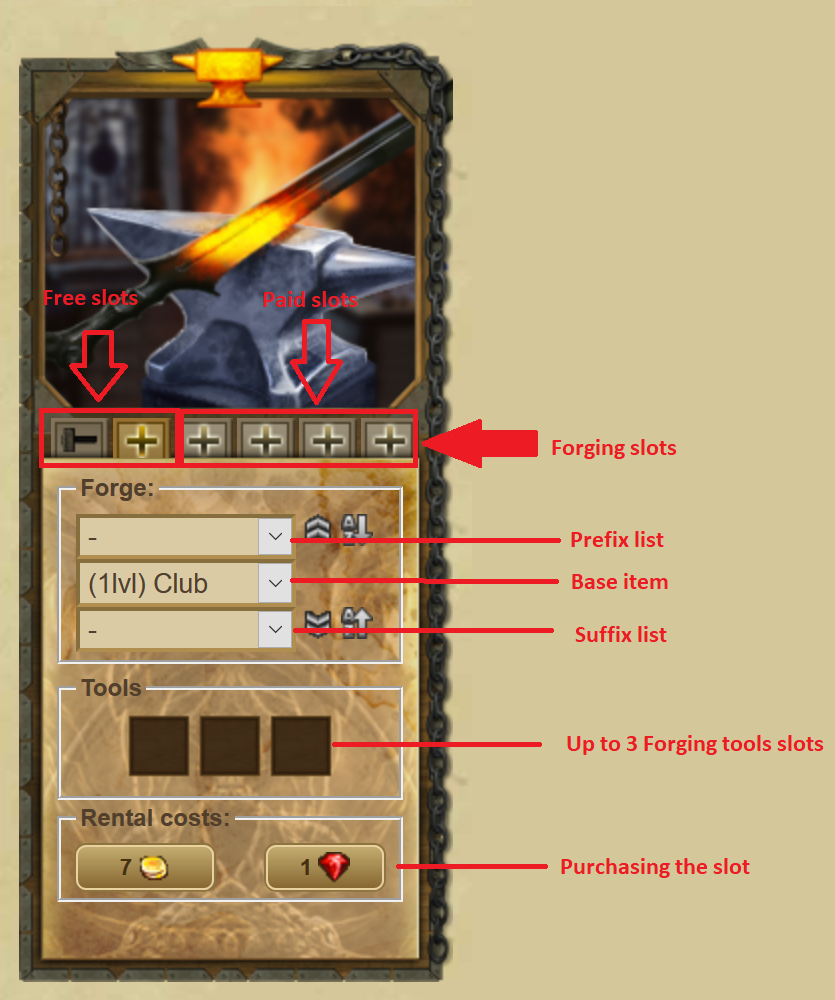
How Forging works
In the Items section of the site we learned that an item is formed by applying a Prefix, Base Item and Suffix. Base Items are already available in your Forging interface but the Prefixes and the Suffixes will need to be learned. They are learned from Scrolls found in your adventures, through Smelting or purchased from other players in the Market. Once you choose your desired Prefix, Base item and Suffix you can purchase the Forging slot and begin the forging.
Once you have purchased the slot, the item is ready to be formed:
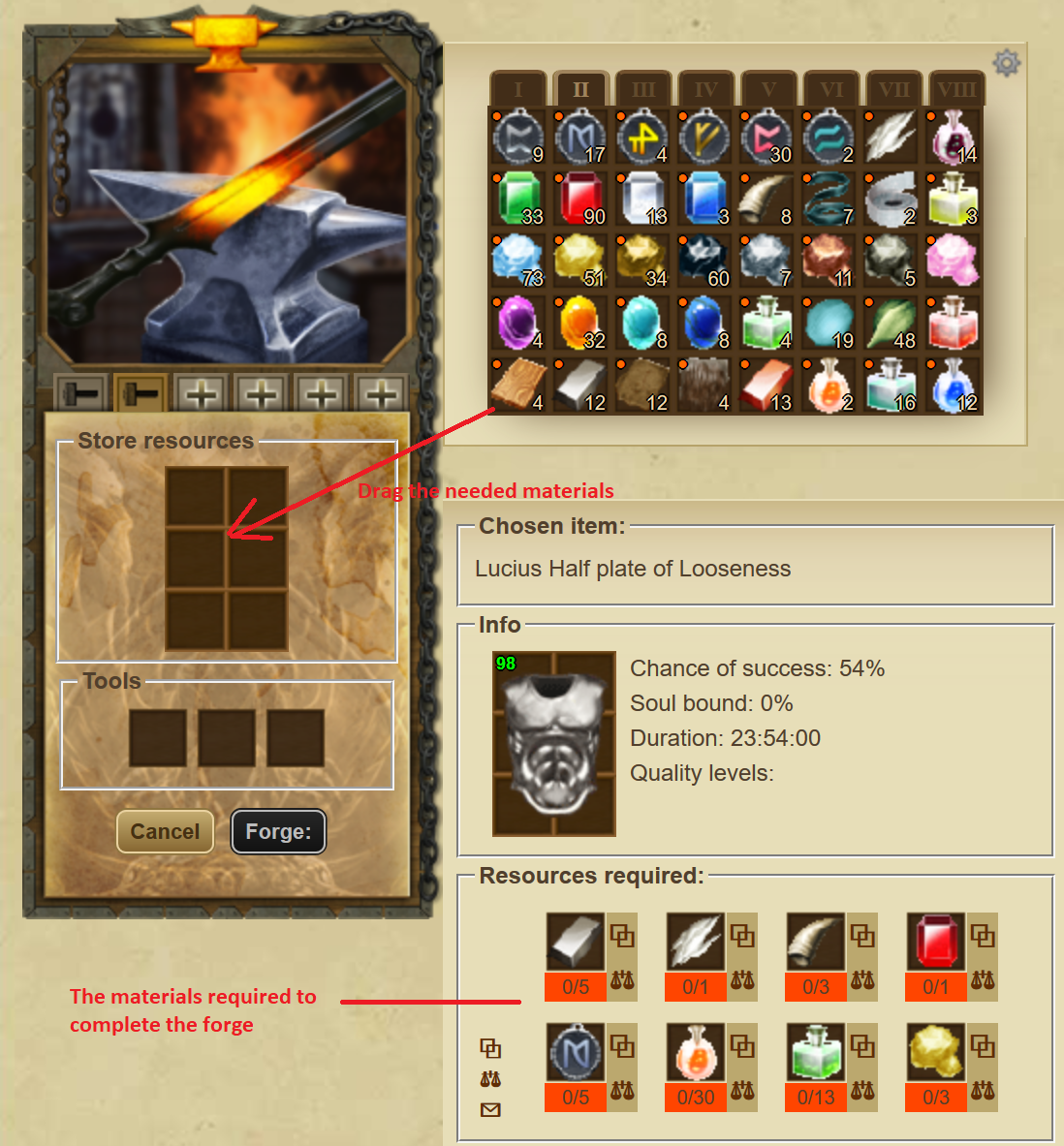
The materials needed to complete the forge are listed under the item. The materials that the item requires are calculated by the summary of materials needed to craft the Prefix + Base Item + Suffix, although not exactly. In the above example this is:
Lucius (Prefix)- 3x  1x
1x  4x
4x  27x
27x  12x
12x  2x
2x 
Half plate (Base item) - 5x 
of Looseness (Suffix) - 6x  However, the Bone Splinter requirement seems to be lowered to 1x and the Lucius are increased by total of 6 to compensate for the Bone Splinter - 1x
However, the Bone Splinter requirement seems to be lowered to 1x and the Lucius are increased by total of 6 to compensate for the Bone Splinter - 1x  3x
3x  1x
1x  1x
1x  . Not sure what the formula here is yet.
. Not sure what the formula here is yet.
You start dragging materials from your inventory to the Store Resources as shown above. The item quality depends on what materials you put in. If you use different qualities of materials, depending on how much of which color you put in, in the end your item will have chance to forge as different color % depending on materials used. Here is an example:
Chance of success - depends on your character level versus the item level you are forging. If you are forging an item which is lower or within your character's item level range, you will be having optimal success chances of around 50-55%. The game has a maximum of 55% success chance. If you want to go higher, you can benefit from Forging Tools or different Micro Events or Costumes.
Soul bound - It always stays on 0%. Not currently known if this ever goes above 0%
Duration - How much time the forging of the item will take. The higher the item level the more time it will take. Also different item types can also affect duration of the forge. Amulets take longer than gloves for example.
Quality levels - As described above and in the video, it depends on the materials you put in to craft the item.
Tip: If you want to know what the stats of an item you are looking at in the forge would be is it was Red quality, you can just double the values. For example if you are making a weapon with 152-154 dmg (values that u can see when u start forging without materials), Red one with 100% conditioning would be 304-308, so just doubled values
When you successfully forge an item and it doesn't fail you will be greeted by this message in the Forging interface:

Failing a Forge
If you happen to fail a forge (you should always aim for 100% if you are forging something important) you are presented with the following pop-up message:
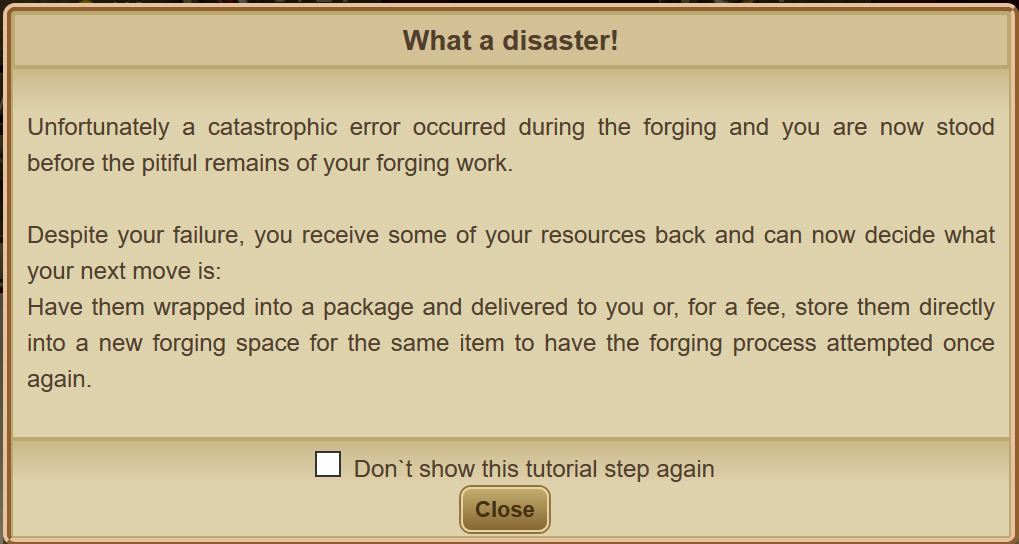
Then you are presented with two options on how to proceed:
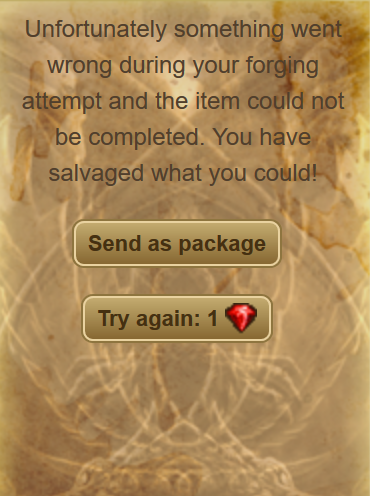
Send as package - You will be refunded with some of the forging materials used in your craft, however they will NOT be the full amount but some 10-20% of the total amount used and they will NOT be the same quality you have invested. For example: if you have put 20x Orange  you will be refunded randomly with some Purple or even Blue
you will be refunded randomly with some Purple or even Blue  . Some people have reported that they can get a higher quality when the failed item has high level base item. It's all random. It really isn't a good deal most of the times but at least you get something back for free on a failed forge.
. Some people have reported that they can get a higher quality when the failed item has high level base item. It's all random. It really isn't a good deal most of the times but at least you get something back for free on a failed forge.
Try again - If you click Try again, you will be given a second chance to forge. You will pay ![]() and it will be a lot, depending on the item level and type of item you were forging and can be more than 5-6
and it will be a lot, depending on the item level and type of item you were forging and can be more than 5-6![]() to restart. Screenshot above was for 11 item level item for an alt and that's why it costs only 1
to restart. Screenshot above was for 11 item level item for an alt and that's why it costs only 1 ![]() . However, the big problem is that it works just like Send as package. It will start the new forge with the same item but it will only refund you small amount of the invested materials and they will be lower quality than the ones you have invested! So no real point of ever trying again. It's just not worth it.
. However, the big problem is that it works just like Send as package. It will start the new forge with the same item but it will only refund you small amount of the invested materials and they will be lower quality than the ones you have invested! So no real point of ever trying again. It's just not worth it.
Here is a video of what actually happens when you try. This is a very painful forge fail at 87% of an 80% Orange 20% Red - 125 item level Lucius ring of Aggression. Meaning that no materials below Orange have been put into the forge, just look at what is being refunded when clicked Try again
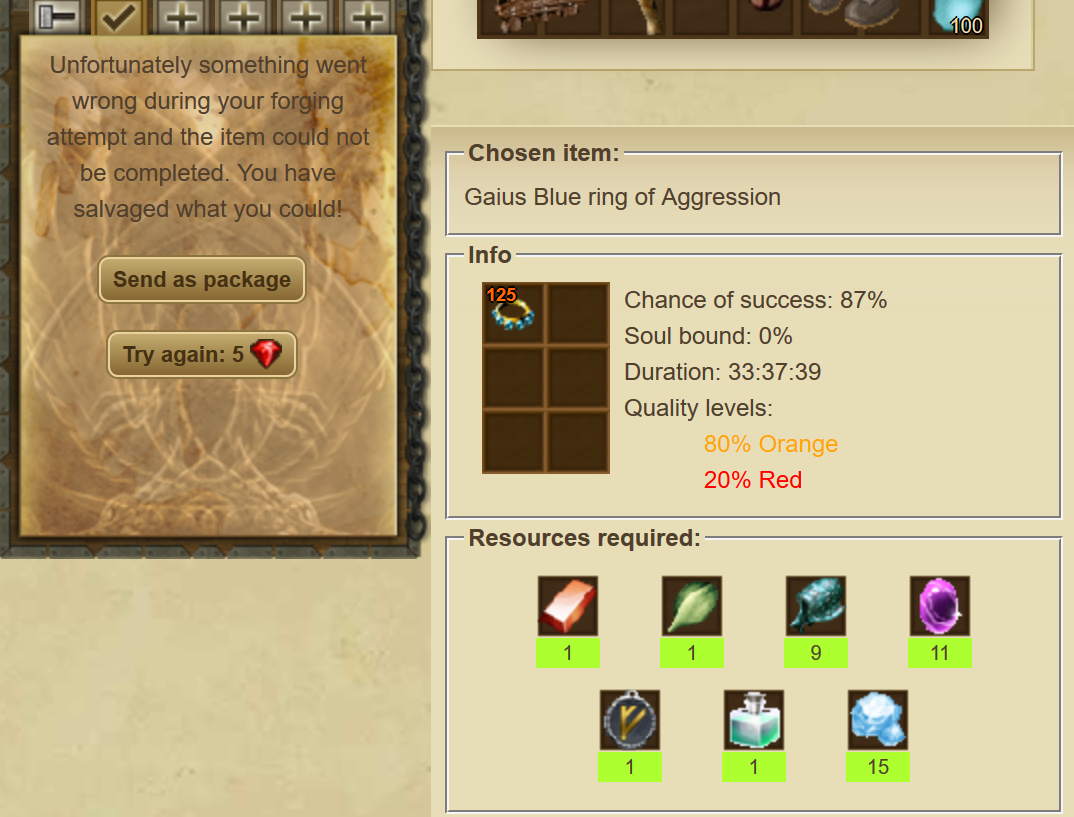
Forging Facts
- You have a total of 6 slots to forge up to 6 items at once. First two only cost
 and the other 4 cost
and the other 4 cost  . The cost depends on the item level and the item type. Amulets being most expensive and can go as high as 10-20
. The cost depends on the item level and the item type. Amulets being most expensive and can go as high as 10-20  and gloves/shoes/helmets the cheapest, between 3-9
and gloves/shoes/helmets the cheapest, between 3-9 
- When planning a forge % success chance and when planning on using
 look for any ongoing events or costumes that could be buffing the forge success chance as the Clovers only boost the basic % success chance. Read more in the Forging Tools
look for any ongoing events or costumes that could be buffing the forge success chance as the Clovers only boost the basic % success chance. Read more in the Forging Tools - Do not gamble with forge success chance %. If you are forging something important, do not let it go below 100%. If seriously in trouble, you can go for 90% but don't go below that ever for a serious item. Unbelievable number of forges had failed on good %-es like 85+
- Cancelling a forge will refund ALL materials in their original quality. The only thing you will loose is the
 or
or  used to purchase the forging slot
used to purchase the forging slot

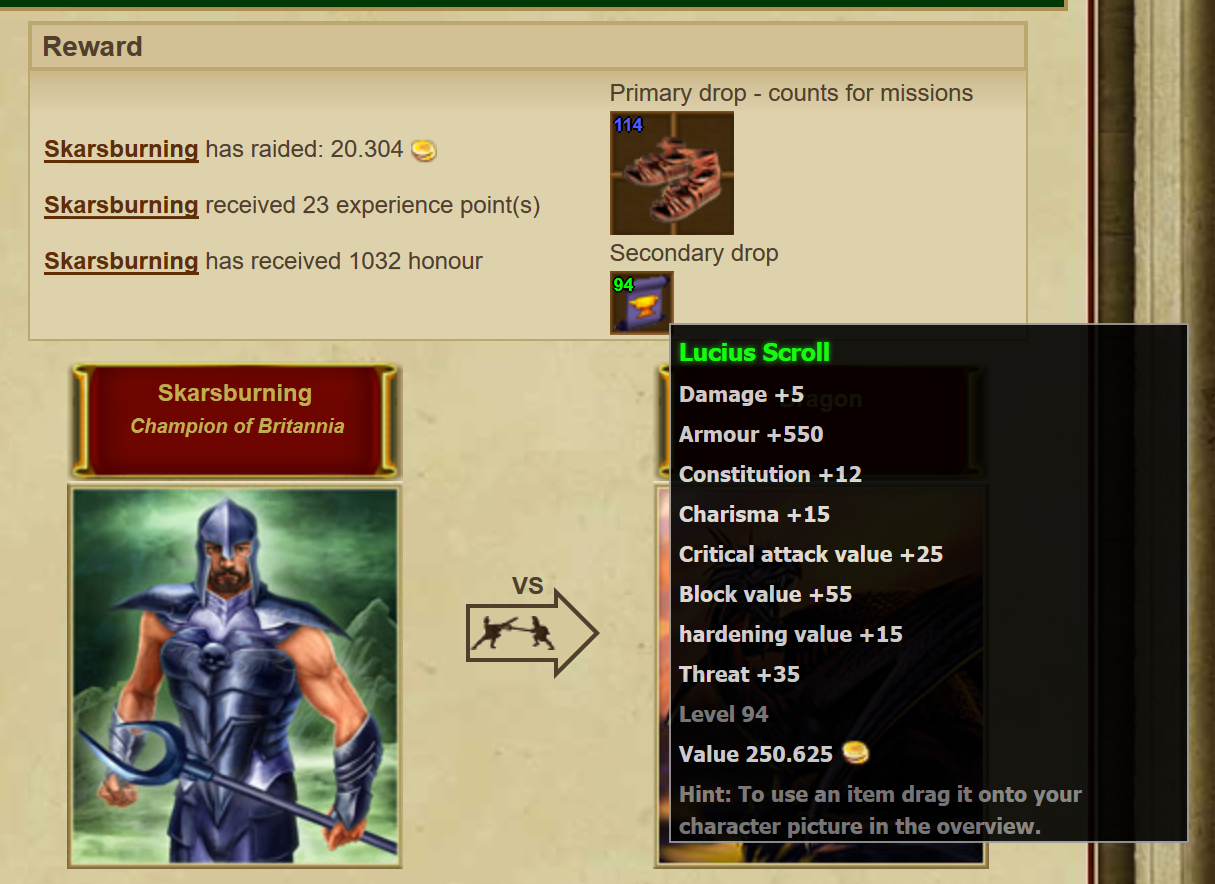
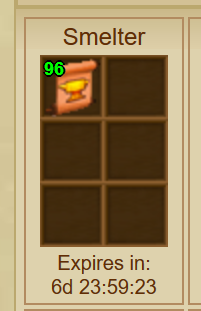





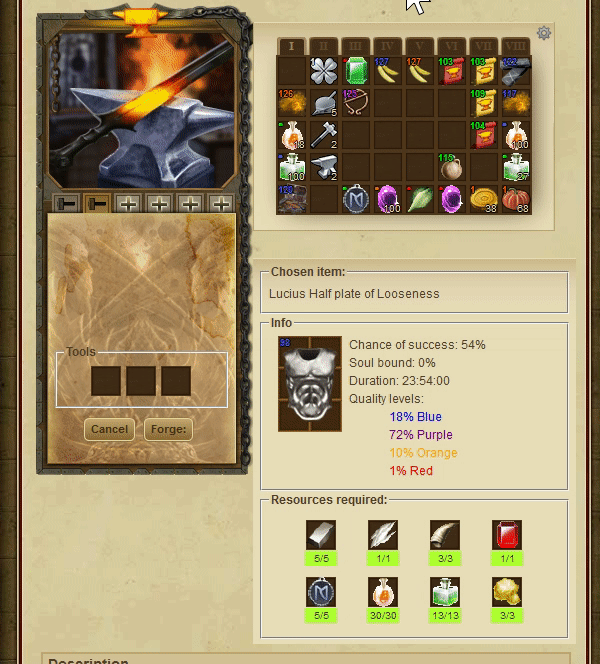







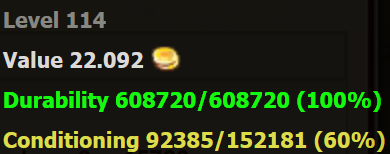
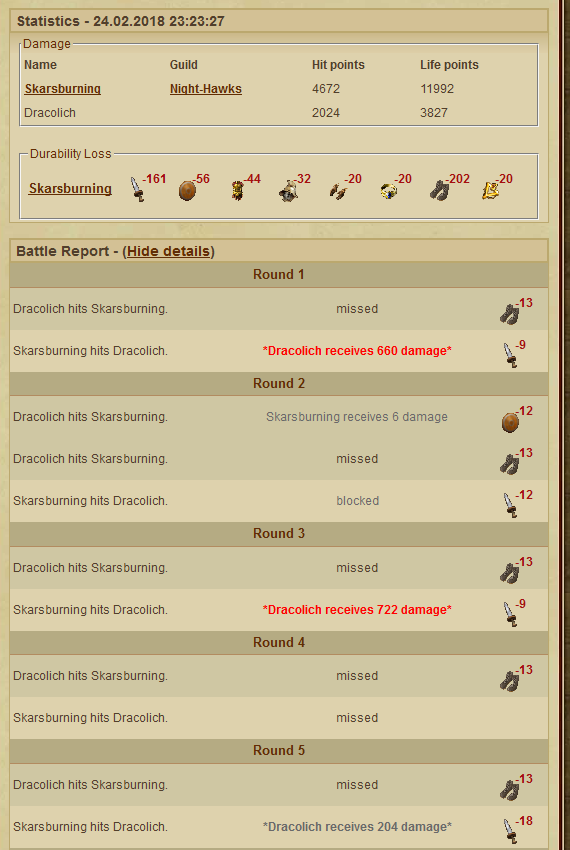

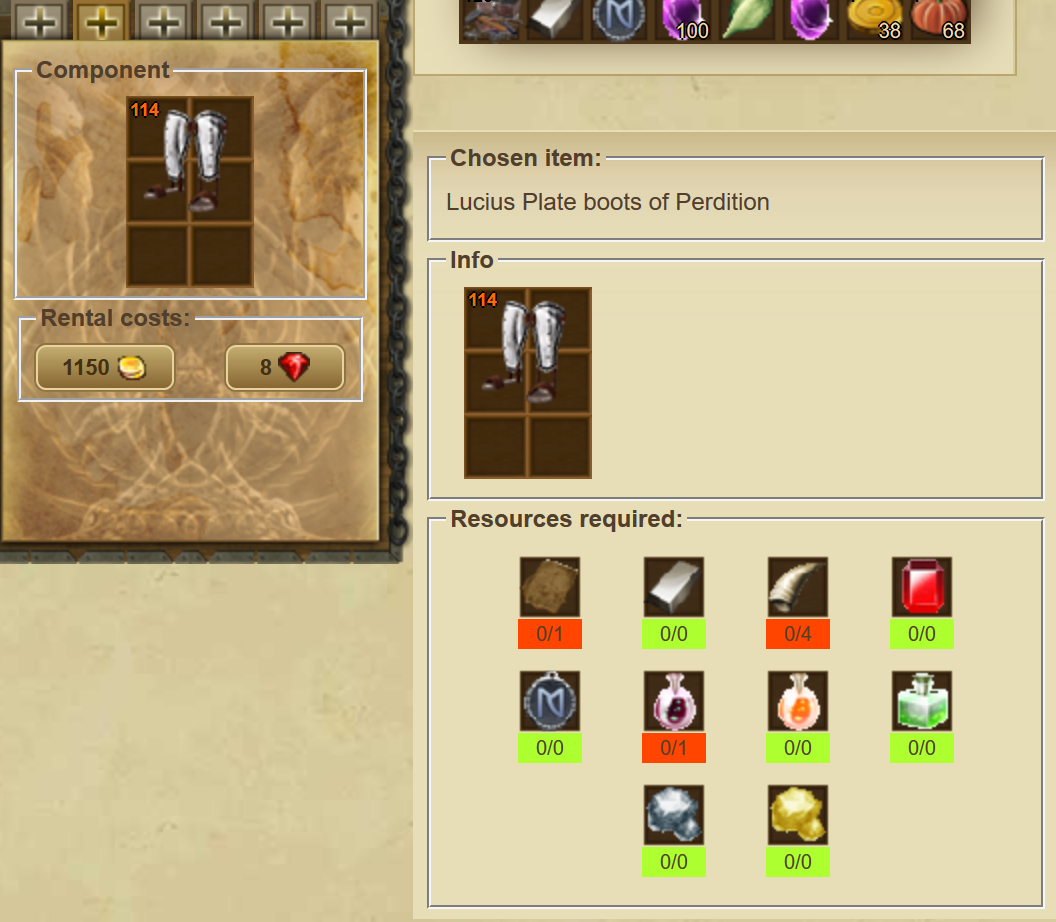
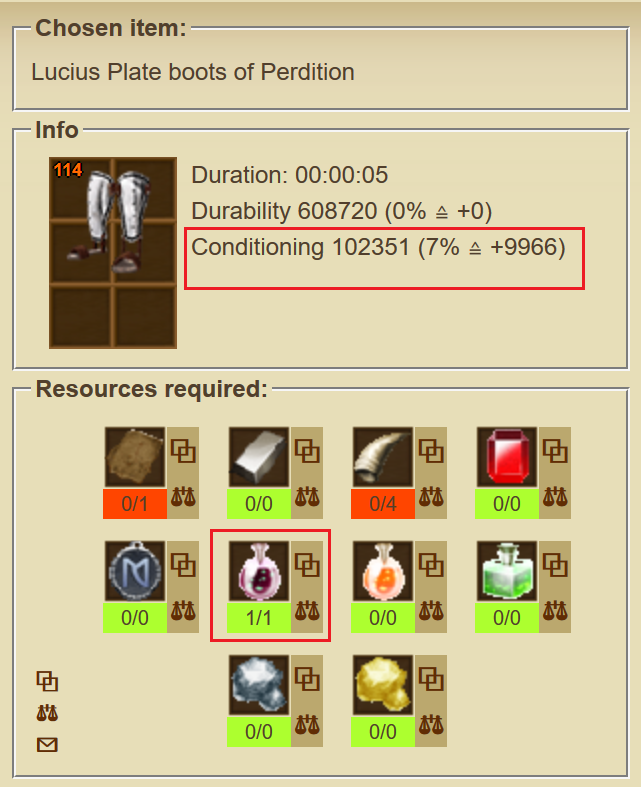
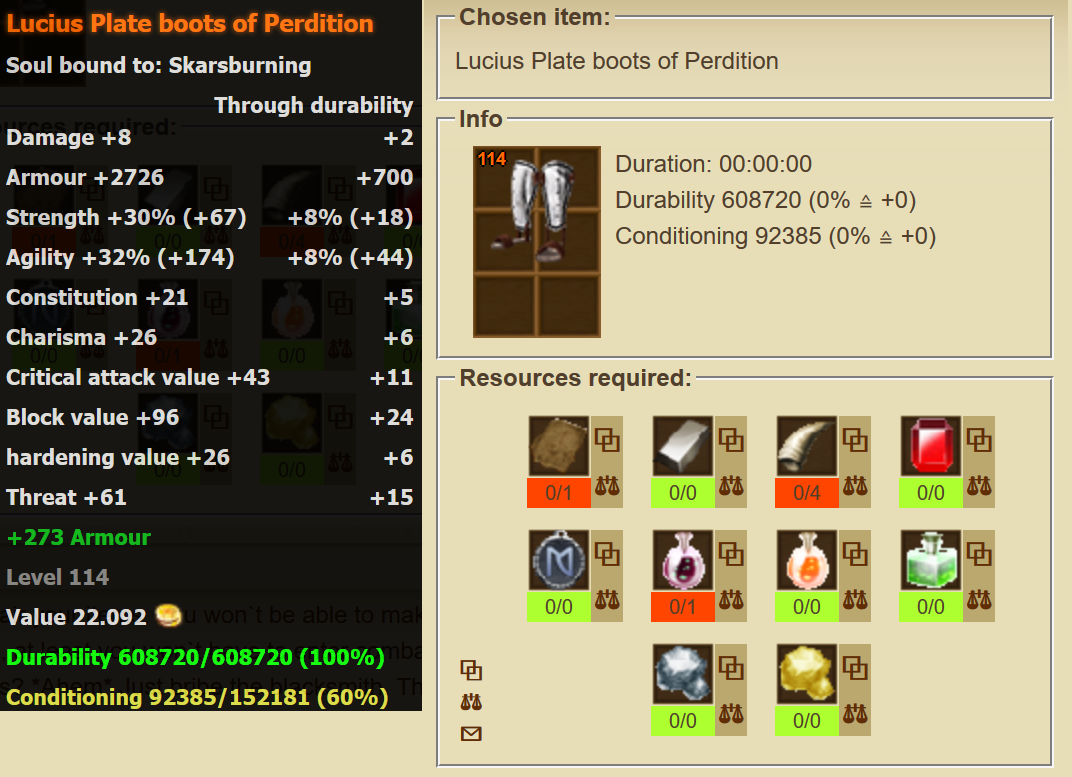



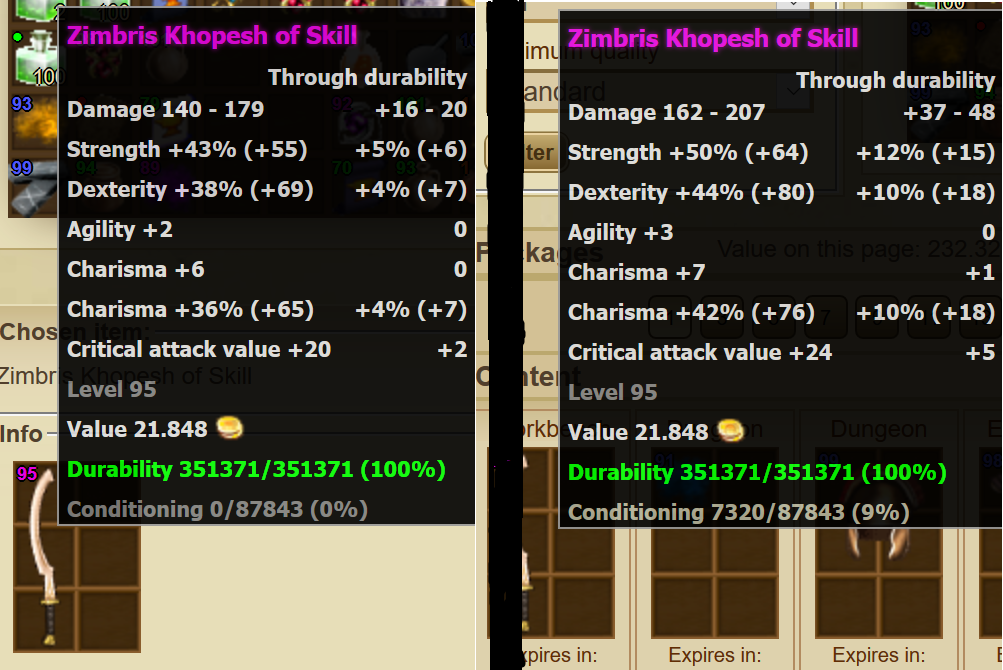

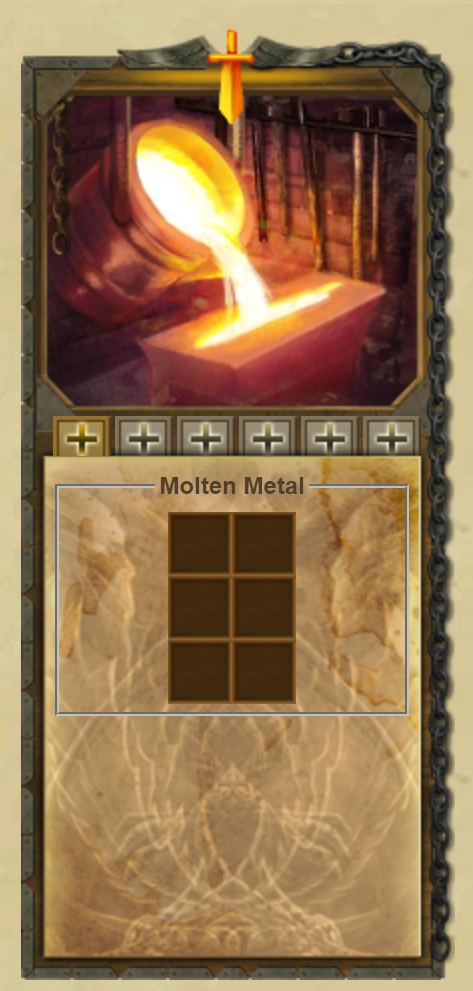
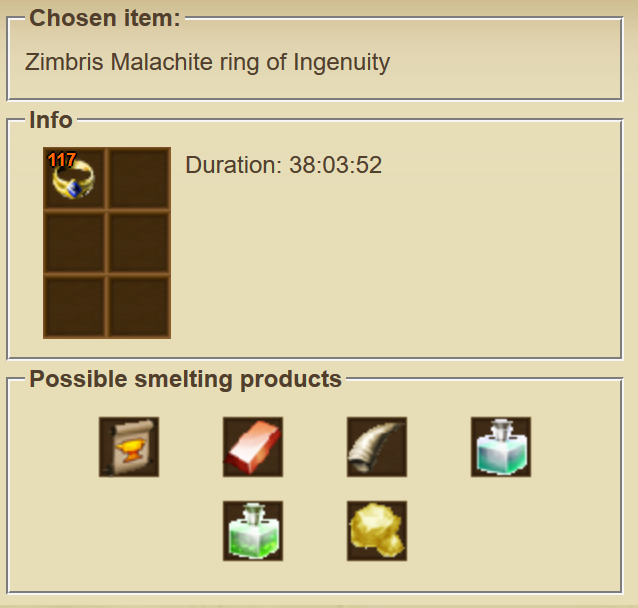
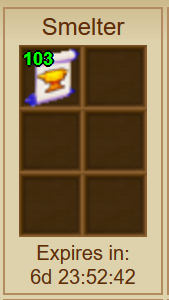
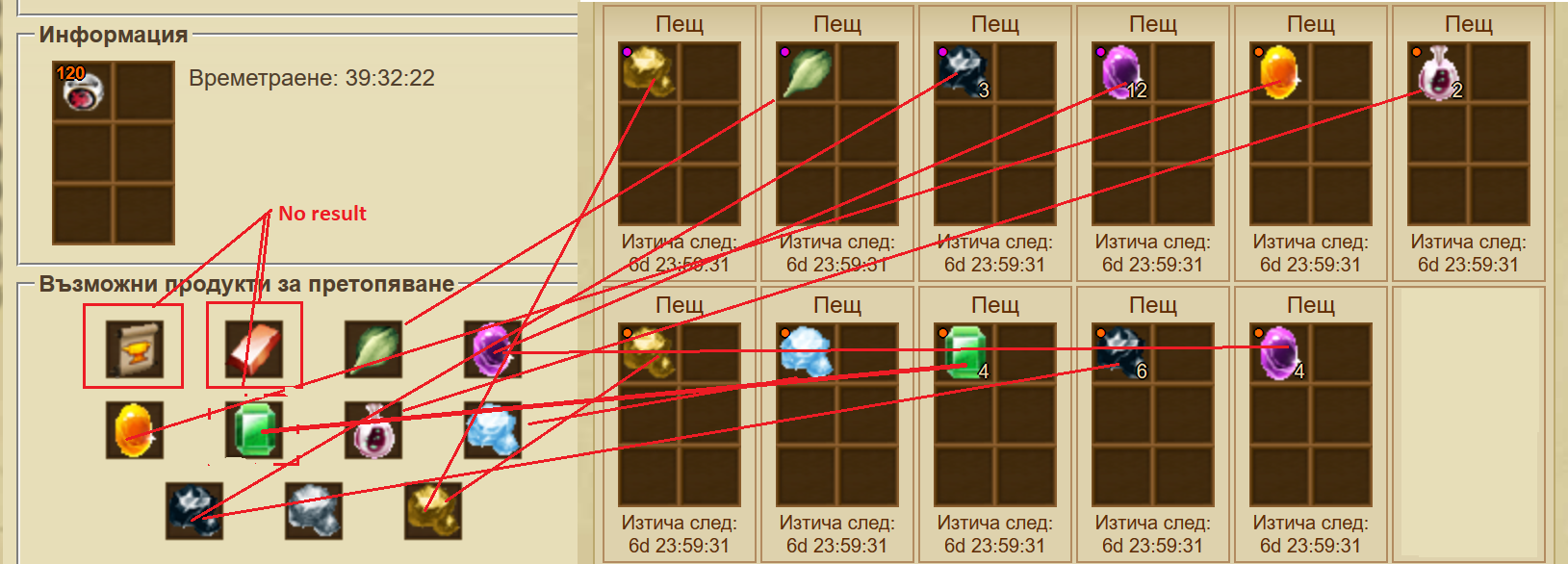
 and the
and the  did not come out of the smelt at all. Total materials from the smelt: 36
did not come out of the smelt at all. Total materials from the smelt: 36 and
and  came in two colors -
came in two colors - 

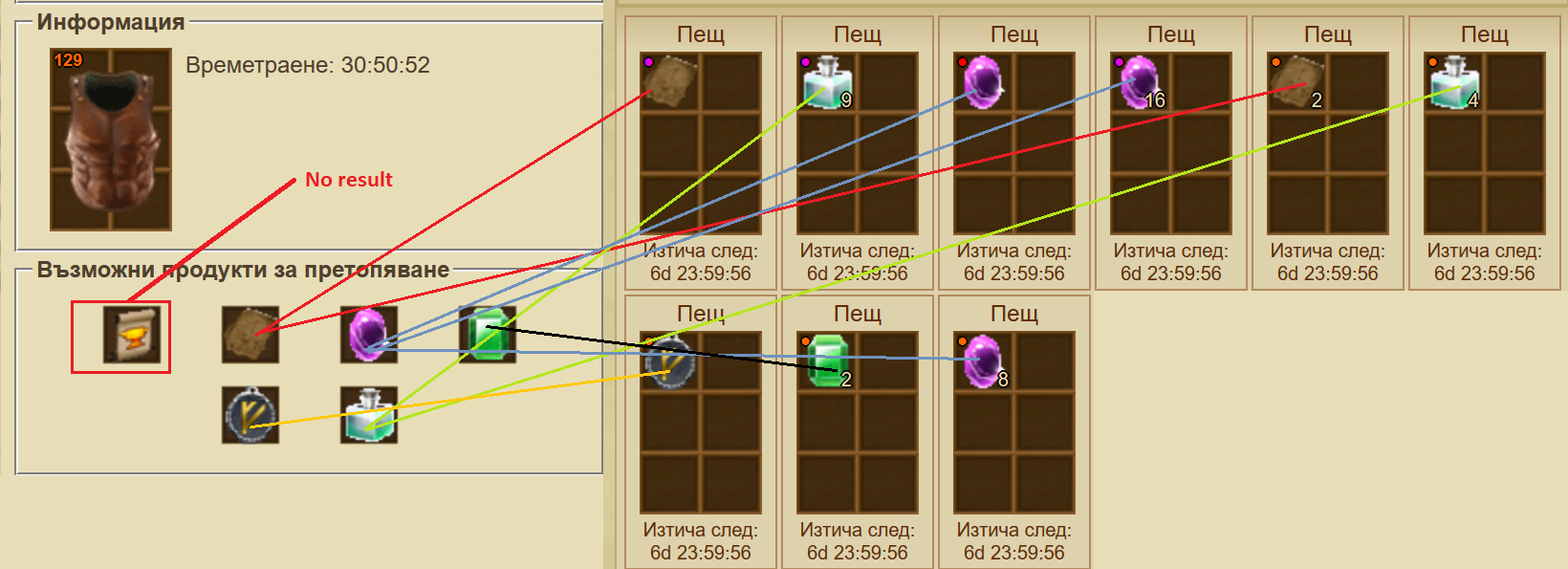

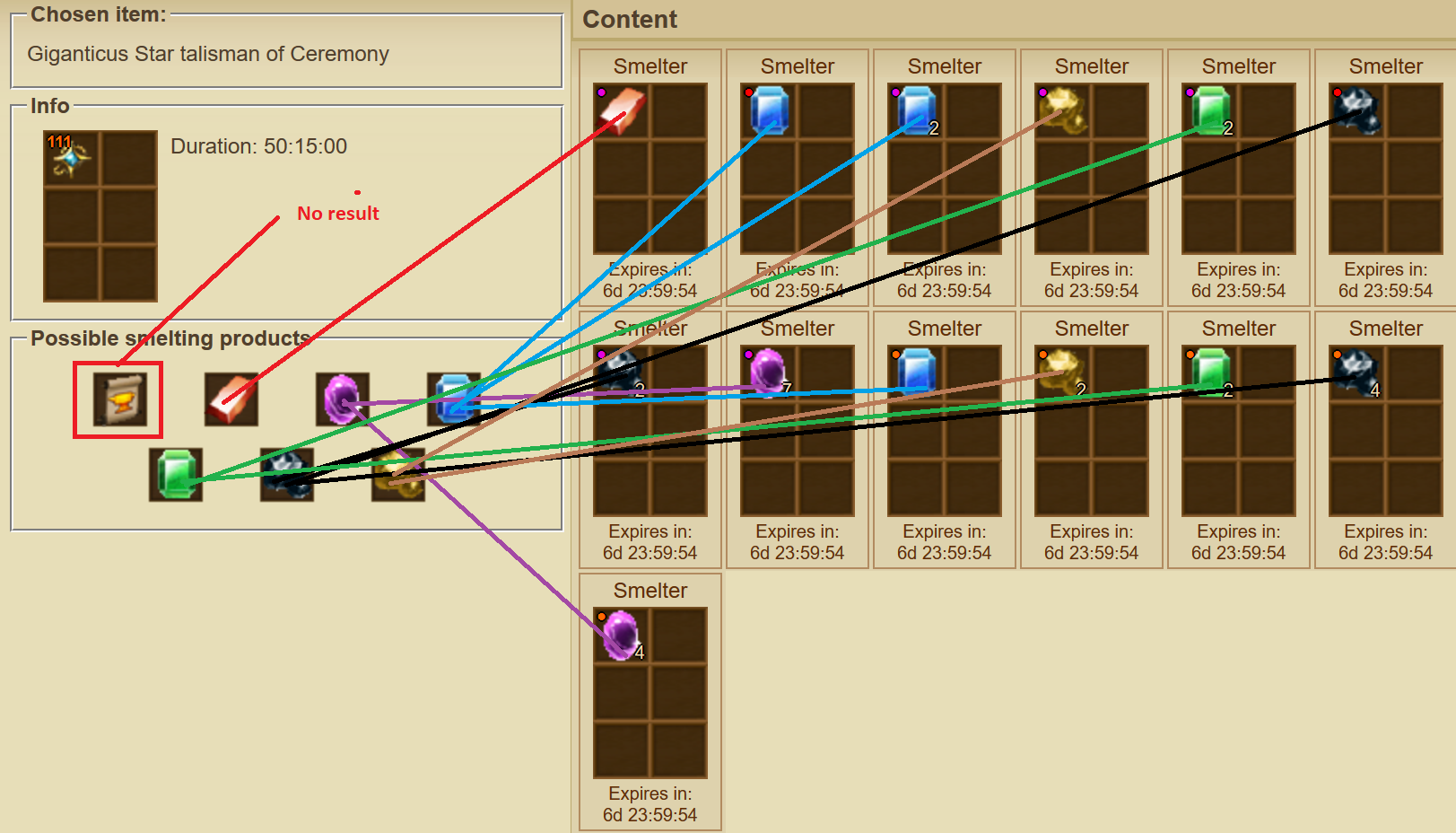
 and
and 